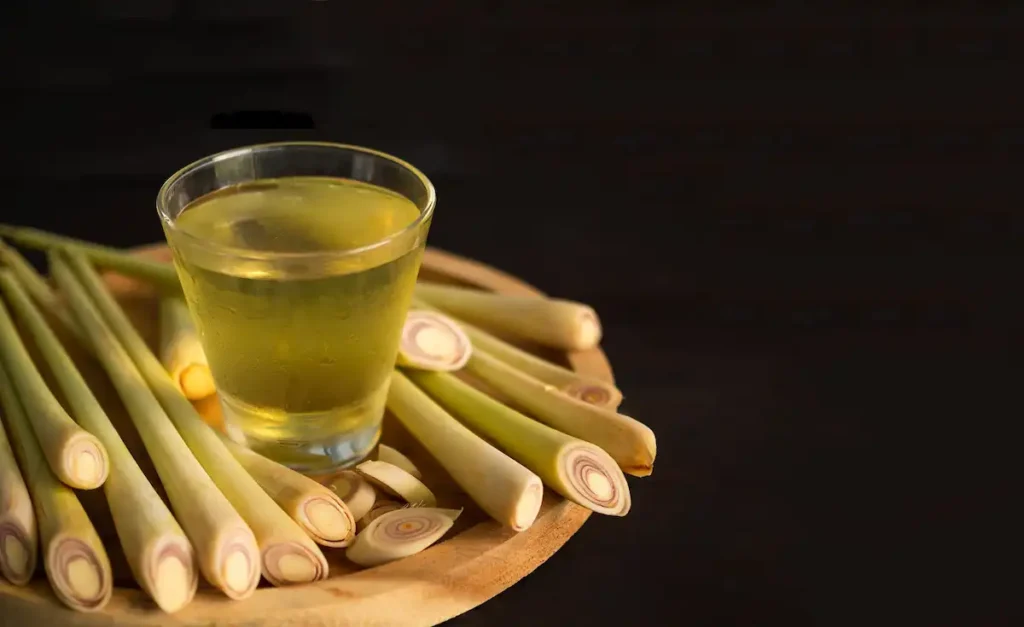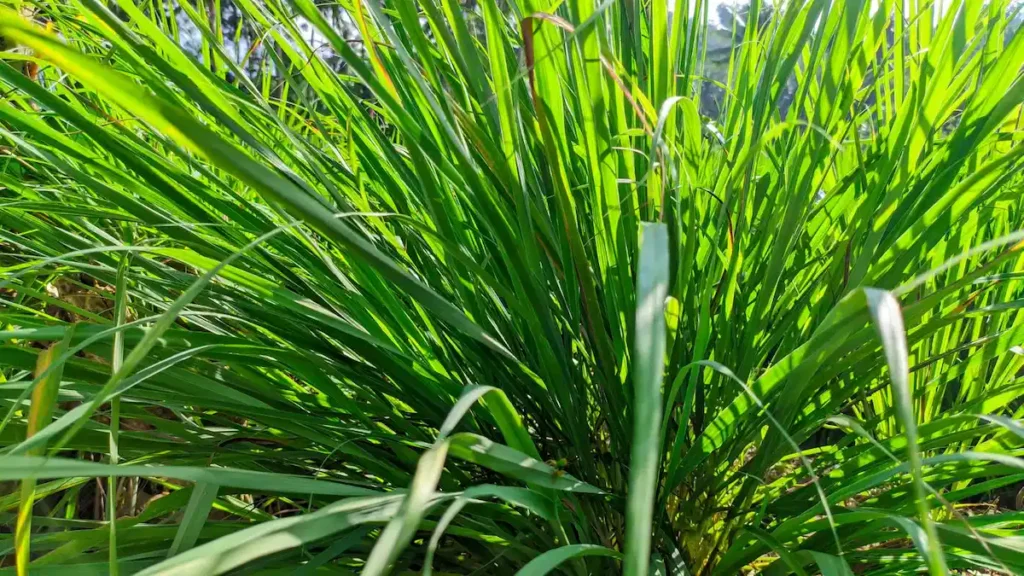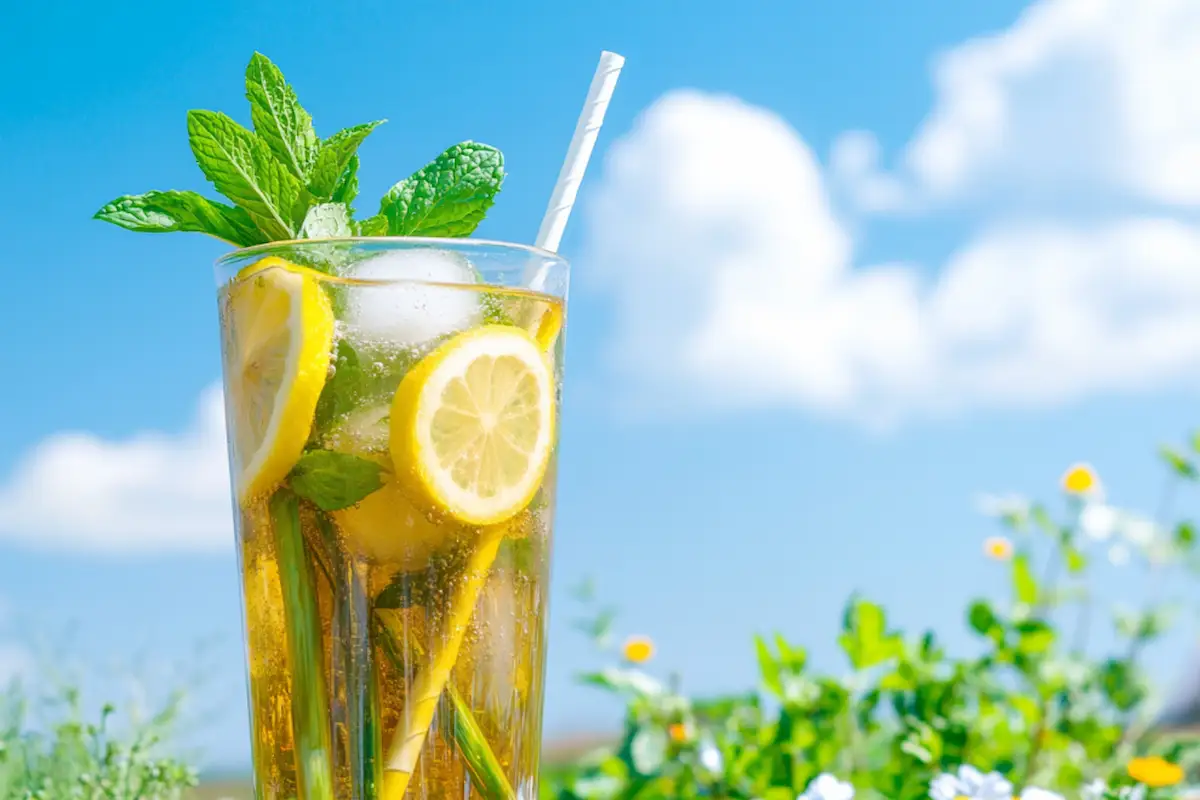Discover the zesty flavor and wellness perks of lemongrass tea, a herbal infusion that soothes, energizes, and delights the senses.
Introduction
Lemongrass tea is a fragrant, citrusy herbal beverage that has charmed tea enthusiasts around the globe. It is sometimes overlooked in the United States, yet this humble grass has a long-standing reputation in many Southeast Asian cultures. Traditionally, lemongrass tea was used to help ease digestive troubles, soothe the mind, and impart a refreshing flavor to various culinary creations. Today, more people are discovering its invigorating aroma and potential health benefits, making it a modern favorite among those seeking caffeine-free alternatives.
Despite its simplicity, lemongrass tea possesses a unique flavor profile and a myriad of possible wellness advantages. It can be served hot, offering a cozy warmth on cold days, or enjoyed chilled, providing a crisp, revitalizing sensation in warmer seasons. Furthermore, it blends well with other herbs, sweeteners, and fruits—allowing ample room for creative experimentation in your kitchen.
Throughout this article, we will explore the cultural roots of lemongrass tea, delve into its nutritional makeup, and outline how to brew the perfect cup. In addition, we will examine its potential health benefits, tips for sustainable sourcing, and a few imaginative uses beyond the teacup. By the end, you will have gained a deeper appreciation for this enticing herb and might be inspired to include lemongrass tea in your daily routine.
Table of Contents
Historical and Cultural Significance

Lemongrass tea holds a storied place in various Southeast Asian cultures. For centuries, families in countries like Thailand, Vietnam, and Malaysia have relied on fresh stalks of lemongrass to brew a soothing herbal infusion. Often called “fever grass” in certain regions, it has been associated with natural remedies aimed at easing common ailments.
A Long-Standing Tradition
Historically, the use of lemongrass goes beyond tea. It is a staple in numerous Southeast Asian dishes, cherished for its gentle citrus fragrance and subtle tang. As global culinary interests expanded, chefs and food enthusiasts outside Asia began incorporating lemongrass into sauces, soups, and marinades. Inevitably, they also discovered the pleasure of steeping it into a calming and fragrant tea.
Modern Popularity in the West
Over time, lemongrass tea gained a foothold in Western markets, especially as people became interested in functional drinks and holistic wellness. It is now relatively easy to find dried lemongrass leaves in specialty tea shops, grocery stores, and online retailers. Many U.S. households have started to appreciate how a simple cup of lemongrass tea can promote relaxation and serve as a delicious alternative to caffeinated drinks.
If you want to explore other herbal infusions with distinctive flavors, you might also enjoy our articles on chrysanthemum tea and clove tea. Each offers its own fascinating cultural background and aromatic profile.
Botanical Overview of Lemongrass

Lemongrass, known scientifically as Cymbopogon citratus, is a perennial grass that thrives in tropical and subtropical climates. Characterized by tall, slender stalks and sharp leaf blades, it exudes a delightful lemony scent due to the presence of natural oils.
Varieties and Growth Habits
Although Cymbopogon citratus is the most familiar type for culinary uses, other lemongrass varieties—like Cymbopogon flexuosus—also exist. In general, these plants require warm temperatures, plenty of sunlight, and well-draining soil. When grown in home gardens, lemongrass often doubles as an ornamental plant because of its graceful leaves and pleasing aroma.
Harvesting for Optimal Flavor
Farmers and gardeners typically harvest lemongrass once the stalks reach a suitable thickness. The lower portion near the bulb is the part most commonly used in cooking and tea, as it contains the highest concentration of flavorful oils. However, the upper leaves can also be used for tea, especially when dried and cut into smaller pieces.
Nutritional Profile and Key Active Compounds
One of the most appealing aspects of lemongrass tea is its naturally low calorie count and zero caffeine content. Consequently, it provides a refreshing experience without the jitters or crash frequently associated with caffeinated drinks.
Essential Vitamins and Minerals
While it is not a substantial source of vitamins and minerals, lemongrass can still contribute trace amounts of the following:
- Vitamin C: May support immune function
- Vitamin A: Essential for vision and skin health
- Potassium: Important for maintaining balanced fluid levels
- Magnesium: Plays a role in various metabolic reactions
These nutrients may appear only in small quantities, yet they can still complement a diverse and balanced diet.
Citral and Other Phytochemicals
Lemongrass contains several active compounds, the most notable being citral, which gives the plant its signature lemony aroma. Citral also boasts potential antibacterial and anti-inflammatory properties. Moreover, lemongrass contains flavonoids and phenolic compounds, both of which are linked to antioxidant activity. Antioxidants help shield cells from damage caused by free radicals, promoting overall well-being over time.
Low-Calorie, Caffeine-Free Appeal
Because lemongrass tea is a herbal infusion, it does not include caffeine. Therefore, it suits individuals who prefer to avoid stimulants or those who want a soothing beverage at any time of day. Additionally, a cup of lemongrass tea without added sweeteners contributes virtually no calories.
Health Benefits of Lemongrass Tea
Although research on the full range of lemongrass tea’s benefits is still emerging, traditional practices and preliminary studies suggest that this citrus-scented brew may offer several advantages. It is vital to note, however, that each person’s experience varies, and it is best to consult a healthcare professional for personalized advice.
Digestive Support
Many people enjoy lemongrass tea to aid in digestion. Its gentle and uplifting aroma can calm an upset stomach or reduce bloating, especially after a heavy or spicy meal. Furthermore, some individuals find that sipping lemongrass tea helps them feel more comfortable following periods of overeating.
Anti-Inflammatory and Antioxidant Properties
The citral and flavonoids present in lemongrass tea may help fight oxidative stress, a process that contributes to inflammation and various health concerns. By supplying antioxidants, lemongrass tea potentially supports the body’s defenses. Although more studies are needed, early evidence points to its usefulness in maintaining overall balance.
Stress Reduction and Relaxation
A warm cup of tea can be soothing in itself. Lemongrass tea, however, amplifies that sense of relaxation with its calming citrus fragrance. Many people include this herbal infusion in their mindfulness or bedtime routines. Therefore, if you are looking for ways to reduce tension, lemongrass tea may become a welcome addition to your evening ritual.
Immune System and Detox Support
Lemongrass tea contains trace amounts of vitamins and minerals that could aid general health. In addition, its antioxidant properties are often associated with detoxification in folk medicine, although rigorous scientific verification is still underway. Nonetheless, drinking lemongrass tea as part of a well-rounded lifestyle can provide mild, consistent support to your overall vitality.
How to Brew the Perfect Lemongrass Tea

Crafting lemongrass tea at home is straightforward. Nevertheless, using fresh or high-quality dried lemongrass can make a difference in both flavor and aroma. Experimenting with different steeping times and optional ingredients lets you customize a cup to your exact preference.
Choosing Fresh vs. Dried Lemongrass
- Fresh Lemongrass: Often found in the produce section of grocery stores. Peel away any tough outer layers, then chop the pale lower stalk into small rounds.
- Dried Lemongrass: Readily available in tea bags or loose-leaf form. Dried stalks are more concentrated, so use smaller amounts to start.
Brewing Methods
- Stovetop Infusion:
- Rinse and chop about 2–3 inches of fresh lemongrass (or 1 tablespoon of dried lemongrass).
- Bring two cups of water to a low boil.
- Add the lemongrass, reduce the heat, and simmer for around 5 minutes.
- Strain the tea into a cup.
- Quick Steeping:
- Place lemongrass (fresh or dried) into a teapot or tea infuser.
- Boil water, let it cool for a brief moment, then pour over the lemongrass.
- Steep for 5–7 minutes, tasting halfway to find the ideal flavor.
Enhancements and Variations
Although lemongrass tea is enjoyable on its own, you can experiment with other herbs and flavorings, for example:
- Ginger: Creates a spicy kick that pairs beautifully with lemony notes.
- Mint: Adds a refreshing twist for a cooling sensation.
- Honey: Sweetens the tea naturally while maintaining its light character.
Serving Suggestions
- Hot: Serve immediately for a warming drink on chilly days.
- Iced: Let the brew cool, then pour over ice and add slices of fresh lemon or cucumber for an invigorating summer beverage.
If you want to try an alternate herbal drink, you might enjoy exploring our post on why use evaporated milk in mac and cheese. Although it is not an herbal tea, it delves into fascinating ways to enrich comfort food with bold flavors—a perfect pairing with a cup of lemongrass tea when your meal is served.
Flavor Profile and Ideal Pairings
Because lemongrass tea contains vibrant citrus notes, it appeals to those who enjoy the brightness of lemon but prefer a milder tang. It can be slightly sweet without any added sugar, and it leaves a light, clean finish on the palate.
Tasting Notes
Many people describe lemongrass tea as lemony, floral, and slightly herbal. This balance makes it a versatile beverage. In fact, it can stand alone as a delicate refreshment or complement more intense flavors on your table.
6.2 Perfect Pairings
- Light Pastries and Cookies: The citrusy undertone of lemongrass can offset buttery, sweet treats.
- Seafood Dishes: If you are enjoying a Southeast Asian meal that includes fish or shrimp, lemongrass tea can tie the flavors together harmoniously.
- Mild Cheeses: A gentle cheese board with soft varieties can benefit from the crisp lift of a lemongrass brew.
Culinary and Household Uses Beyond the Teacup
Lemongrass is more than a simple ingredient for tea. Thanks to its unique flavor and pleasant aroma, it can play a role in various culinary and household contexts.
Herbal Remedies and Home Apothecary
In folk practices, people occasionally use cooled lemongrass tea as a mild astringent for the skin, dabbing it onto the face with a cotton pad. Some also mix it with bathwater for a gentle, spa-like soak. Furthermore, its citrusy scent may serve as a natural air freshener when sprayed around living spaces.
Lemongrass in Cooking
Many Southeast Asian recipes feature lemongrass as a key component in soups, curries, and marinades. To transfer this taste into desserts and breads, you can steep dried or fresh lemongrass in milk or water, then incorporate it into your baking. This technique imparts a subtle floral-citrus essence.
Aromatherapy and Wellness
Lemongrass essential oil is often found in diffusers, as its bright, invigorating fragrance can uplift the mood. Some people also use lemongrass steam inhalation to temporarily ease mild sinus congestion, especially in tandem with other herbs like eucalyptus or mint.
Potential Side Effects and Precautions
While lemongrass tea is generally safe for most people, certain precautions are helpful to keep in mind.
Allergies and Sensitivities
Anyone who is allergic to grasses or prone to dermatitis should approach lemongrass with caution. Mild allergic reactions might present as itching, rashes, or swelling of the lips and tongue. If you experience any discomfort, discontinue use and seek medical attention.
Drug Interactions
Lemongrass tea could interact with medications related to blood pressure or diuresis. Therefore, people who take prescription medications should consult their healthcare provider before making lemongrass tea a daily habit.
Pregnancy and Moderation
Pregnant or breastfeeding individuals should receive medical guidance before using lemongrass as a remedy. While moderate consumption is typically benign, it is prudent to consult a professional about herbal teas in such circumstances.
Sustainability and Ethical Sourcing
As global demand for lemongrass rises, it is increasingly important to prioritize ethical, eco-friendly methods of production.
Fair-Trade Lemongrass
Fair-trade practices ensure that the farmers growing lemongrass receive equitable compensation. By choosing fair-trade lemongrass, consumers can support sustainable livelihoods in farming communities while helping to maintain the environment.
Environmental Considerations
Lemongrass plants generally flourish in warm, humid climates and do not require excessive water once established. However, large-scale farming techniques vary, and it is wise to purchase products from companies that value responsible soil stewardship, minimal pesticide usage, and protection of local ecosystems.
Organic vs. Conventional
Although organic certification can be more expensive, it often guarantees that fewer synthetic chemicals were used throughout growth. Opting for organic lemongrass may reduce the risk of harmful pesticide residues, particularly if you are a regular tea drinker.
Lemongrass Tea Recipes and Serving Ideas
Now that we have explored the essence of lemongrass tea, let us delve into a versatile recipe and creative variations to enhance your tea experience.
Classic Lemongrass Tea Recipe
Below is an easy, detailed recipe you can prepare in your own kitchen. Feel free to adjust the amount of lemongrass, sweeteners, or complementary herbs based on personal preference.
Ingredients
- 2 cups (475 ml) of fresh water
- 1 tablespoon dried lemongrass or 2–3 inches of fresh lemongrass stalk, finely chopped
- Optional additions:
- 1 teaspoon grated ginger
- 1 teaspoon honey or sugar (adjust to taste)
- A few mint leaves
Step-by-Step Instructions
- Prepare the Lemongrass: If using fresh lemongrass, wash the stalk thoroughly, remove the tough outer leaves, and chop the lower portion into small rounds. For dried lemongrass, simply measure out one tablespoon.
- Boil Water: Bring two cups of water to a rolling boil in a small saucepan or kettle.
- Combine Ingredients: Add the lemongrass (and optional ginger) to the boiling water. Reduce heat to medium-low and let the mixture simmer for about 5 minutes to extract the flavors thoroughly.
- Strain the Tea: Turn off the heat and strain the liquid into a mug or teapot, discarding the solid pieces.
- Sweeten and Garnish: Stir in honey or sugar if desired, and decorate with mint leaves for a refreshing burst of flavor.
- Serve Immediately: Enjoy your lemongrass tea hot, or allow it to cool down before pouring over ice for a crisp, chilled beverage.
Nutritional Information
Approximate Values per 100 g of Prepared Lemongrass Tea (without sweeteners)
| Nutrient | Amount |
|---|---|
| Calories | 0–2 kcal |
| Carbs | < 0.5 g |
| Protein | 0 g |
| Fat | 0 g |
| Vitamin C | Trace |
| Vitamin A | Trace |
| Potassium | Trace |
| Magnesium | Trace |
(Note: These figures are approximate and vary based on brewing duration, lemongrass quality, and additional ingredients.)
Iced Lemongrass Tea with Citrus Twist
To make a thirst-quenching cold version, follow the same steps but double the amount of lemongrass for a more intense flavor. Then, after straining, let the tea cool before mixing it with fresh lemon or lime juice. Serve over ice and garnish with lemon slices or cucumber rounds.
Lemongrass Tea Latte
Those who prefer a creamy texture can transform lemongrass tea into a latte by adding warm milk or a dairy-free alternative such as almond milk. A bit of sweetener, like condensed coconut milk, can heighten the comforting richness.
Frequently Asked Questions (FAQ)
What are the benefits of lemongrass tea?
Lemongrass tea may assist with digestion, reduce mild inflammation, and offer relaxing qualities thanks to its aromatic oils. In addition, it is caffeine-free and contains trace amounts of vitamins and minerals that can support general health when part of a balanced lifestyle.
Who should not drink lemongrass tea?
Individuals who are allergic to grasses or sensitive to specific botanical components should approach lemongrass tea with caution. Also, those on certain blood pressure or diuretic medications should consult a healthcare professional before regular consumption.
Is it safe to drink lemongrass every day?
Daily consumption of lemongrass tea is typically safe for most healthy adults. However, moderation is key, as excess intake of any herbal beverage can pose unforeseen risks. If you have underlying medical conditions, it is best to seek personalized guidance from a healthcare provider.
What is the best time to drink lemongrass tea?
Lemongrass tea can be enjoyed any time of day. Because it is caffeine-free, many people savor it in the evening to wind down. Others drink it after meals for digestive comfort. Experiment with different schedules to find what suits you best.
Conclusion
Lemongrass tea stands out for its pleasantly bright flavor, gentle aroma, and possible health benefits. This herbal infusion has deep cultural roots in Southeast Asia, although it is now beloved worldwide for its versatility and refreshment. Moreover, it suits various occasions—whether you need a soothing companion on a cold afternoon or a revitalizing iced beverage on a hot summer day.
Therefore, we encourage you to try different methods of brewing lemongrass tea, adjust it to your taste, and even use it in creative cooking endeavors. Because of its lively citrus notes and potential wellness perks, lemongrass tea truly deserves a spot in your pantry. Once you integrate it into your daily routine, you might be pleasantly surprised by how much it brightens your mealtimes and calms your senses.
If you crave more flavorful infusions, do not hesitate to explore the robust taste of clove tea or incorporate a comforting meal alongside your tea, such as our old-fashioned baked macaroni and cheese. By mixing and matching, you can discover culinary harmony in every sip and bite.

